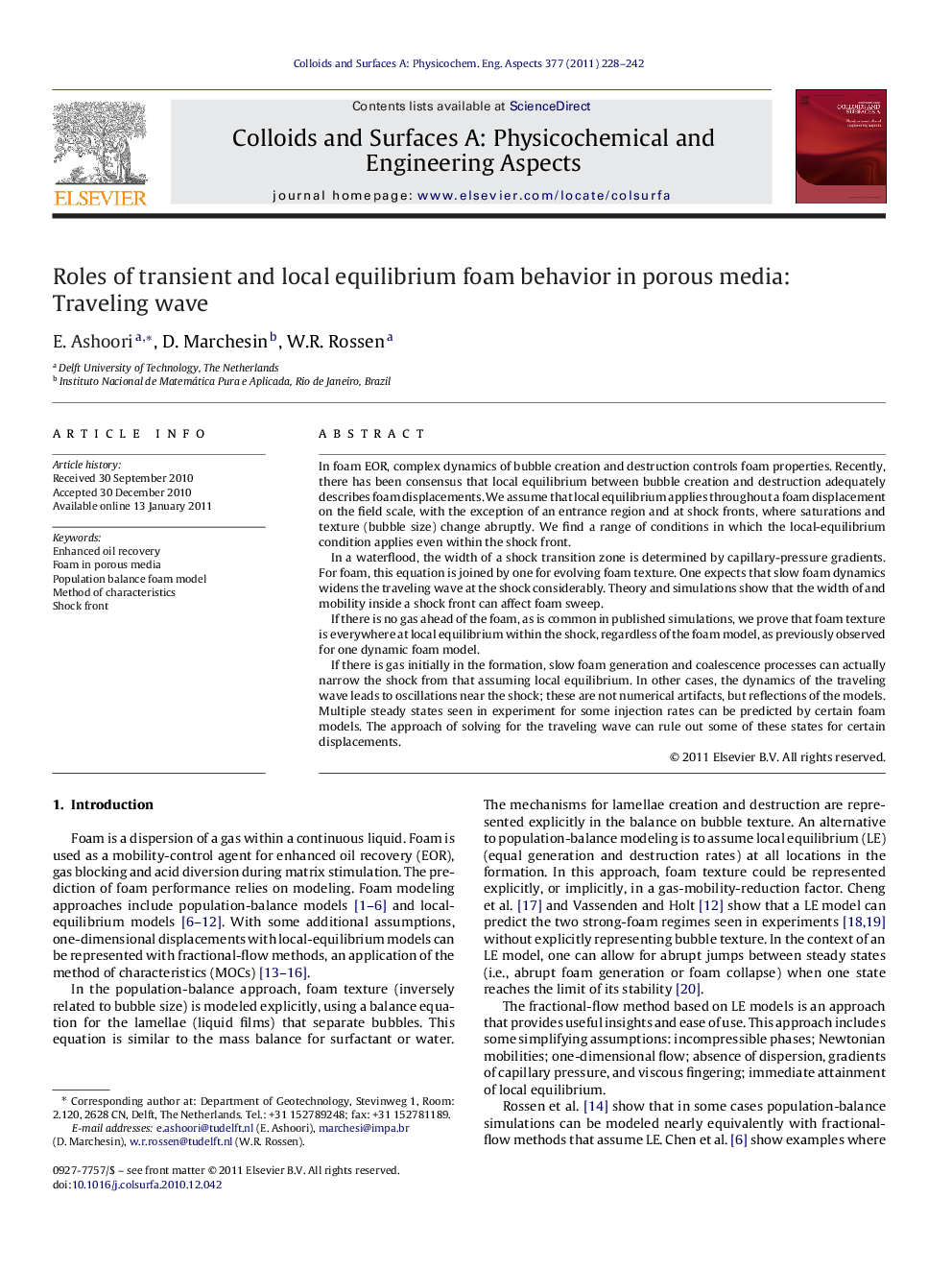| Article ID | Journal | Published Year | Pages | File Type |
|---|---|---|---|---|
| 594963 | Colloids and Surfaces A: Physicochemical and Engineering Aspects | 2011 | 15 Pages |
In foam EOR, complex dynamics of bubble creation and destruction controls foam properties. Recently, there has been consensus that local equilibrium between bubble creation and destruction adequately describes foam displacements. We assume that local equilibrium applies throughout a foam displacement on the field scale, with the exception of an entrance region and at shock fronts, where saturations and texture (bubble size) change abruptly. We find a range of conditions in which the local-equilibrium condition applies even within the shock front.In a waterflood, the width of a shock transition zone is determined by capillary-pressure gradients. For foam, this equation is joined by one for evolving foam texture. One expects that slow foam dynamics widens the traveling wave at the shock considerably. Theory and simulations show that the width of and mobility inside a shock front can affect foam sweep.If there is no gas ahead of the foam, as is common in published simulations, we prove that foam texture is everywhere at local equilibrium within the shock, regardless of the foam model, as previously observed for one dynamic foam model.If there is gas initially in the formation, slow foam generation and coalescence processes can actually narrow the shock from that assuming local equilibrium. In other cases, the dynamics of the traveling wave leads to oscillations near the shock; these are not numerical artifacts, but reflections of the models. Multiple steady states seen in experiment for some injection rates can be predicted by certain foam models. The approach of solving for the traveling wave can rule out some of these states for certain displacements.
Graphical abstractFigure optionsDownload full-size imageDownload as PowerPoint slideResearch highlights▶ We solve for traveling wave at the shock accounting for capillary dispersion and foam kinetics. ▶ We show that if there is no gas ahead of the foam, foam texture is everywhere at local equilibrium (LE) within the shock. ▶ If there is gas initially in the formation, slow foam dynamics can narrow the shock from that assuming LE or lead to oscillations near the shock. ▶ The approach of solving for the traveling wave can rule out some of the foam multiple steady states seen in experiment.
